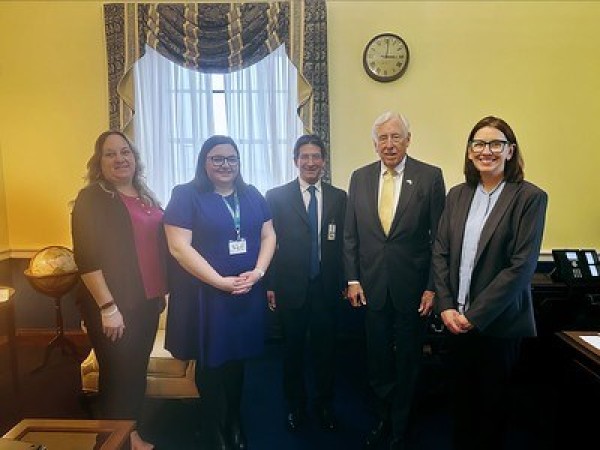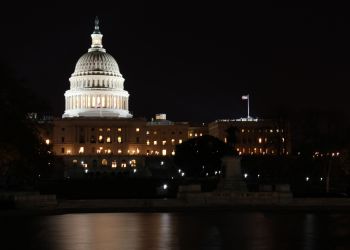On February 28, local public health leaders from across the country joined NACCHO on Capitol Hill for our annual Local Public Health on the Hill event. These public health professionals visited 101 Congressional offices to talk to senior staff and elected officials about the public health workforce, infrastructure, and the unique needs in their communities. Participants met with elected officials from across the United States. Among the elected officials they met with are Senator Kelly (AZ), Senator Ernst (IA), Senator Cantwell (WA), Senator Blackburn (TN), Rep. Tokuda (HI), Rep. Hoyer (MD), Rep. Carson (IN), Rep. Crow (CO) and many others!
Local Public Health on the Hill participants discussed the vital role health departments play in the health and safety of communities. They also identified the challenges faced when recruiting and retaining staff. While federal support during the height of the pandemic allowed health departments to hire additional temporary workers, those funds are expiring, and health departments need consistent funding to build a pipeline of staff. A 2021 analysis found that local public health departments need at least 54,000 more full-time equivalent positions – an increase of 70 percent – to provide a minimum set of public health services. Congress passed bipartisan legislation to authorize the Public Health Workforce Loan Repayment Program, but the program needs funding. The program offers loan repayment for public health professionals who agree to serve three years in a local, state, or tribal health department. Participants asked Congress to support NACCHO’s request for an annual appropriation of $100 million to start and sustain the program in FY2025. This could help recruit as many as 2,000 public health professionals to these important jobs in health departments.
Local health leaders also identified the need for the strongest possible funding for CDC’s Public Health Infrastructure and Capacity Program and asked Members of Congress to support an annual appropriation of $1 billion in FY2025. These funds would strengthen our nation’s ability to address all public health needs at the community level and make public health work more efficient. The funding currently appropriated by Congress for public health has a variable reach to local public health departments. States make decisions about how those dollars are allocated, which means many local health departments may not receive the funds they need. NACCHO appreciates recent efforts to expand direct funding to the 50 largest local health departments but that only reaches counties of at least 2 million people (about the population of Nebraska) or cities of at least 500,000 people (about half the population of Montana). Most local health departments are unable to rely on federal investments to support their local community. Local health officials asked for support of report language that directs CDC to better ensure funds reach local health department and track where federal funds go after being sent to the state level.
To increase the visibility of these important issues, NACCHO highlighted these meetings across social media platforms, featuring photos of local public health leaders with their elected representatives. NACCHO will continue to provide members with opportunities to highlight the public health needs in their communities.


